Table of Contents
Ever wondered how you can brighten a shelter cat's day? It's simpler than you think! Our furry friends in shelters often miss out on the fun and stimulation they need. That's where we come in. This article is your guide to creating amazing diy cat toys for shelters, using simple materials you probably already have at home. We'll explore why playtime is so crucial for these cats, what makes a toy irresistible (and what makes them run away!), and then, we'll get our hands dirty with some easy-to-make toy tutorials. You'll also learn about safety tips, because, let's face it, we want these toys to be fun, not a hazard. Plus, we'll talk about keeping those toys clean and ways to make the shelter a happier place for every cat. So, are you ready to become a toy-making superhero for cats in need? Let's get started!
Why Playtime Matters for Shelter Cats
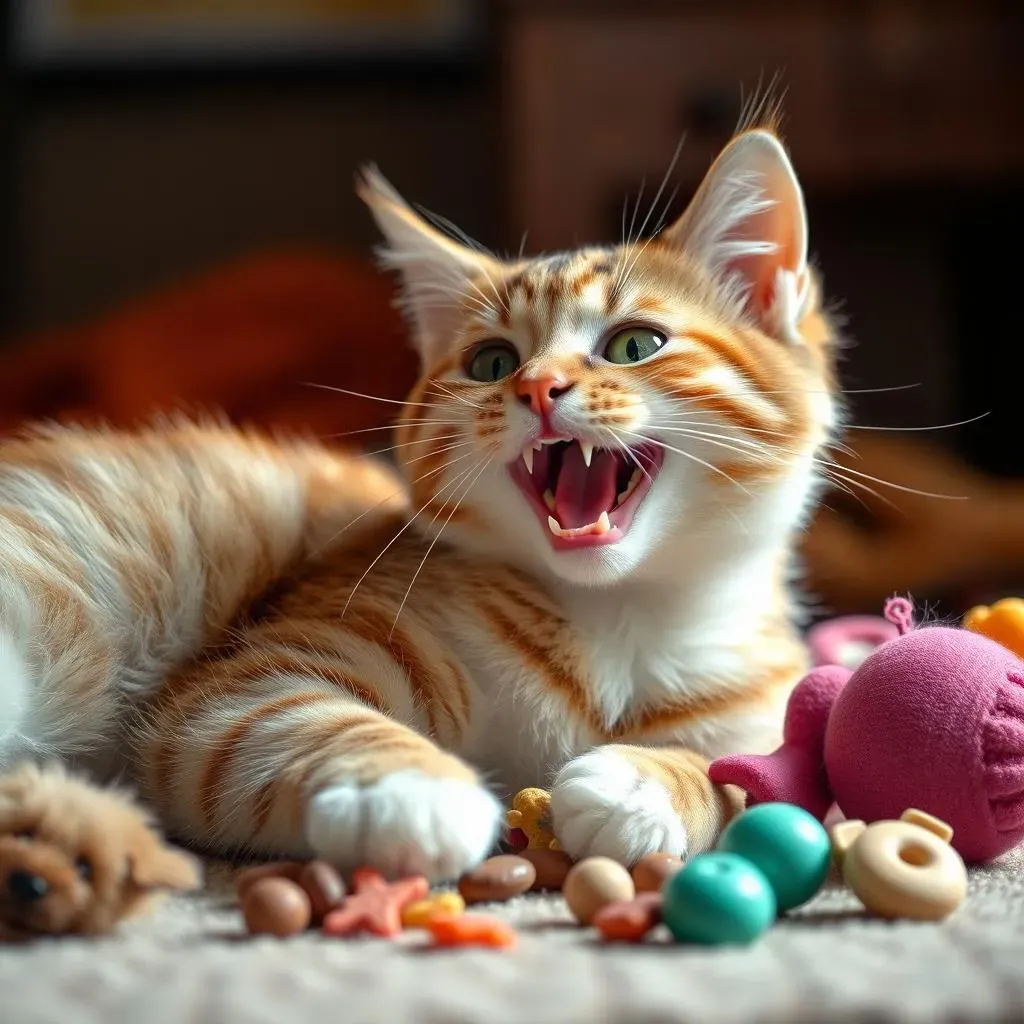
Why Playtime Matters for Shelter Cats
Physical Health: More Than Just Zoomies
Okay, so you see a cat zooming around, right? It's cute, but it's also really important. For shelter cats, that burst of energy is not just random silliness. It's essential for their physical well-being. Regular play helps them maintain a healthy weight, preventing obesity, which can lead to all sorts of problems like diabetes and joint issues. Think of it like this: a cat stuck in a cage all day is like a human stuck on the couch – they need to move to stay healthy. Playtime provides that vital exercise, keeping their muscles strong and their bodies working well. It's their way of staying fit and ready for their next adventure, whether that’s chasing a toy or finding a forever home.
Plus, it's a great way to burn off some of that pent-up energy that comes with being cooped up, helping them sleep better at night.
Mental Stimulation: Boredom Busters
Let's be real, shelter life can be a bit monotonous for cats. Same walls, same sounds, day in and day out. That's where play comes in. It's not just about physical exercise; it's also about mental stimulation. When a cat is stalking a toy or figuring out how to get that feather wand, they’re using their brains. This mental engagement helps keep them sharp and prevents boredom, which can lead to stress and depression. Think of it like a puzzle for their mind, keeping them engaged and happy. It's like giving them a mini adventure every day, even when they can't explore the great outdoors.
Benefit | Description |
|---|---|
Physical Health | Maintains healthy weight, strengthens muscles, improves sleep. |
Mental Stimulation | Prevents boredom, reduces stress, keeps the mind sharp. |
Social Interaction | Provides bonding opportunities with humans and other cats. |
Social Interaction: Building Bonds
Playtime also offers a fantastic opportunity for social interaction. It's a chance for cats to interact with humans and even other cats in a positive way. When you play with a shelter cat, you’re not just giving them exercise; you’re building trust and a bond. They learn that humans can be fun and engaging, which can make them more adoptable. For cats who live together, playtime can also be a way for them to interact in a positive, non-competitive way. It's like a team-building exercise, helping them get along better. So, by providing these play sessions, you're helping them become more well-adjusted and happier cats, ready to find their forever homes.
What Makes a Great Cat Toy (and What Doesn't)
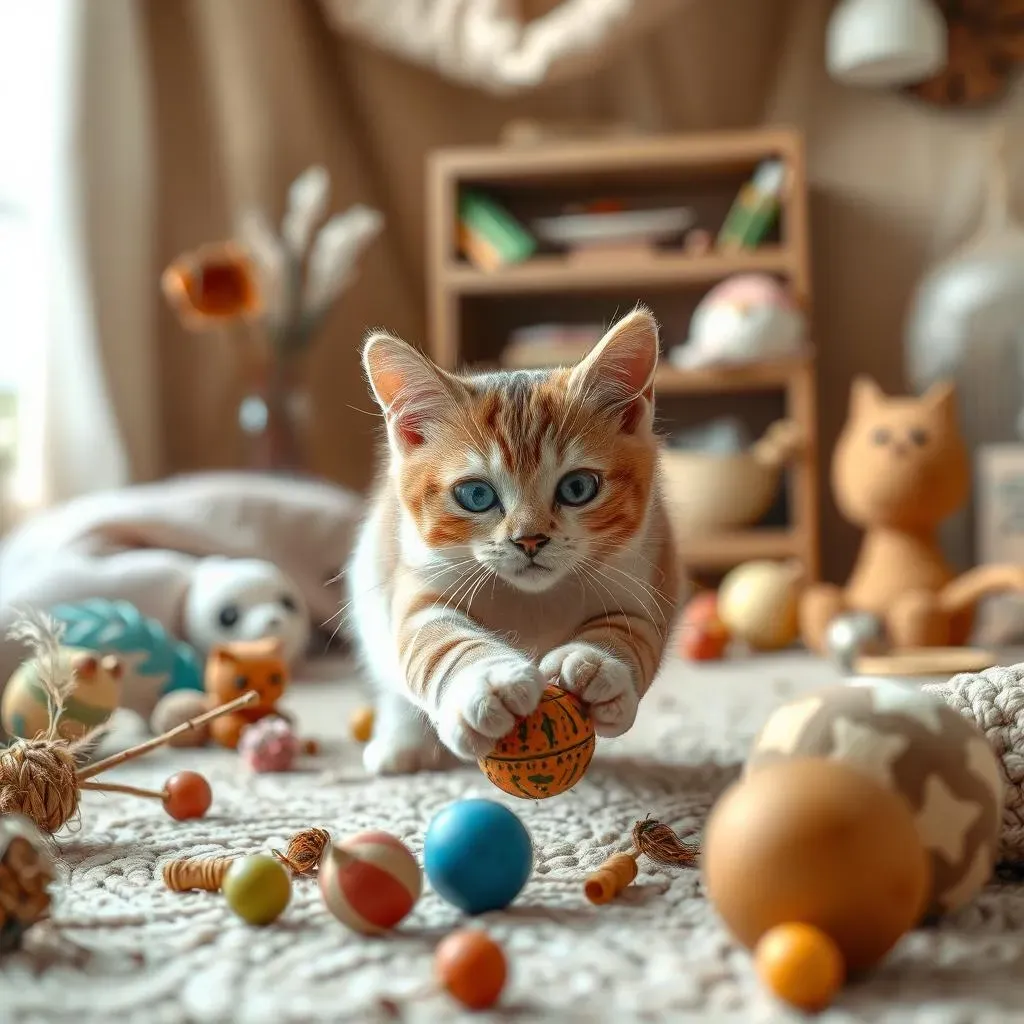
What Makes a Great Cat Toy (and What Doesn't)
Okay, so we know why playtime rocks for shelter cats, but what makes a toy actually, you know, good? It's not just about tossing any old thing their way. Cats are picky little predators, and their toys need to tap into those instincts. A great cat toy mimics prey - think small, lightweight, and easy to bat around. It should be something they can chase, pounce on, and maybe even "kill" (don't worry, it's just play!). Texture matters too; they often enjoy things they can sink their claws into, like soft fabrics or feathers. And let's not forget the power of catnip! A little bit of that magic herb can turn a boring toy into a feline obsession. But, just as important as what makes a good toy is what makes a bad one. Loud noises, sticky surfaces, or anything too big and bulky are usually a no-go. We'll get more into the specifics, but that gives you a general idea of what we're aiming for.
Now, let's get into the nitty-gritty of what cats love and what they absolutely despise. Imagine you're a cat, okay? You see something small and fluttery – your hunting instincts kick in, right? Toys like feather wands, small balls, or even crinkly paper are like little prey items to them. They love to stalk, pounce, and engage in that "hunt." They also enjoy toys that allow them to use their brains and solve puzzles, like treat-dispensing toys or things they can bat around to make them move. But what do they hate? Think loud, sudden noises – they’re not fans of anything that startles them. Sticky stuff? Forget it. And textures like tinfoil? Cats are not about that. It's all about appealing to their natural instincts and avoiding things that are too much or too weird for their liking.
So, here's a quick rundown to keep in mind. Think about what would get a cat's attention in the wild: small, light, things that move, things that make noise when they move. Now, imagine what would scare or annoy them: something that's too loud, too big, or makes a strange texture. It's all about understanding their perspective. We need to be like cat toy whisperers, creating things that spark their interest and keep them engaged. And, of course, safety is paramount. We need to make sure they're having fun without any risk of getting hurt, which we'll cover in the next section. But, for now, remember: think prey, think texture, think fun, and always think like a cat!
What Cats Love | What Cats Dislike |
|---|---|
Small, lightweight toys | Loud, sudden noises |
Toys that mimic prey (feathers, balls) | Sticky surfaces |
Textures they can claw into | Unpleasant textures (tinfoil) |
Catnip | Bulky, hard-to-move toys |
Easy DIY Cat Toys for Shelters: StepbyStep
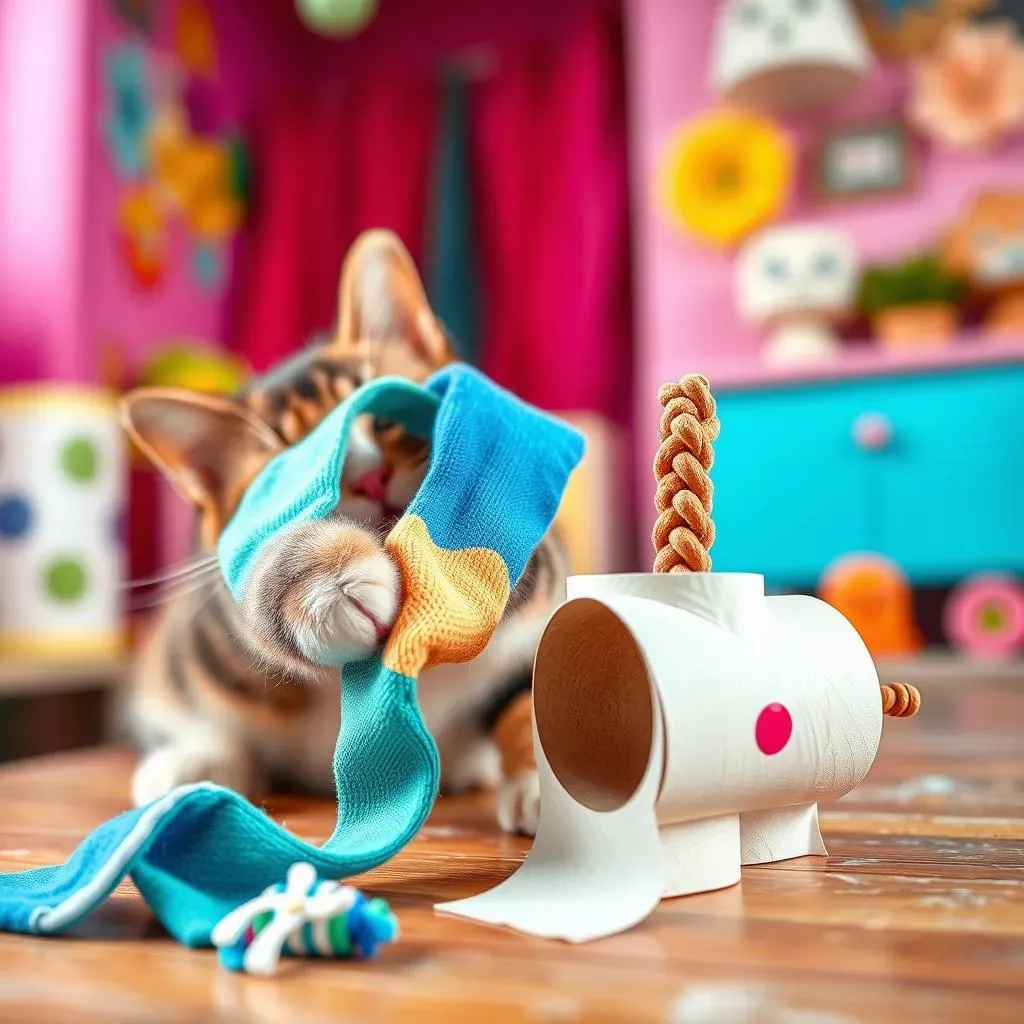
Easy DIY Cat Toys for Shelters: StepbyStep
T-Shirt Strips: The No-Sew Wonder
Alright, let's get crafty! First up, we've got the easiest toy ever: t-shirt strips. Seriously, if you can cut a straight line, you can make this. Grab an old t-shirt (one you're not attached to!), and lay it flat. Cut off the bottom hem, then cut the shirt into strips, about an inch or two wide. The length doesn't have to be exact. Now, you can tie a few strips together to make a longer, dangly toy, or you can leave them as is. Cats love the texture of the fabric, and they're perfect for batting around. You can even braid the strips to make a thicker toy. It's a great way to recycle old clothes and give shelter cats something fun to play with, it's a win-win situation!
The best part? No sewing skills required! I remember when I first tried this, I was amazed at how quickly I could make a whole pile of these toys. It's so satisfying to see how such a simple thing can bring so much joy to a cat. Plus, they're super durable and can withstand some serious kitty play, which is exactly what we need for shelter environments.
Toilet Paper Roll Treat Dispenser: The Puzzle Master
Next on our list is the toilet paper roll treat dispenser, a toy that's a bit more engaging. Don’t toss those empty rolls! Grab one, and fold in the ends to create a little pocket. You can leave them open or cut small holes. Put some treats or kibble inside, and watch the cats go to town trying to get them out. It’s a simple puzzle that keeps them entertained and stimulates their minds. You can also get fancy and decorate the roll with markers, making it more visually appealing. Just make sure that the markers are non-toxic, because you know how cats can be, they like to chew things!
I found that this toy is especially great for cats that are a little more shy or hesitant to play. It gives them a way to interact with a toy at their own pace, and the reward of treats is a great motivator. You can also vary the size of the holes to make it easier or harder, depending on the cat’s skill level. It’s a fantastic way to provide both mental stimulation and a tasty treat all at once. Just remember to supervise them the first couple of times to make sure they don’t just try to eat the cardboard!
Toy | Materials | How to Make It |
|---|---|---|
T-Shirt Strips | Old t-shirt, scissors | Cut t-shirt into strips, tie together if desired |
Toilet Paper Roll Dispenser | Toilet paper roll, treats | Fold ends of roll, put treats inside, cut holes if desired |
Safety First: What to Avoid When Making Cat Toys
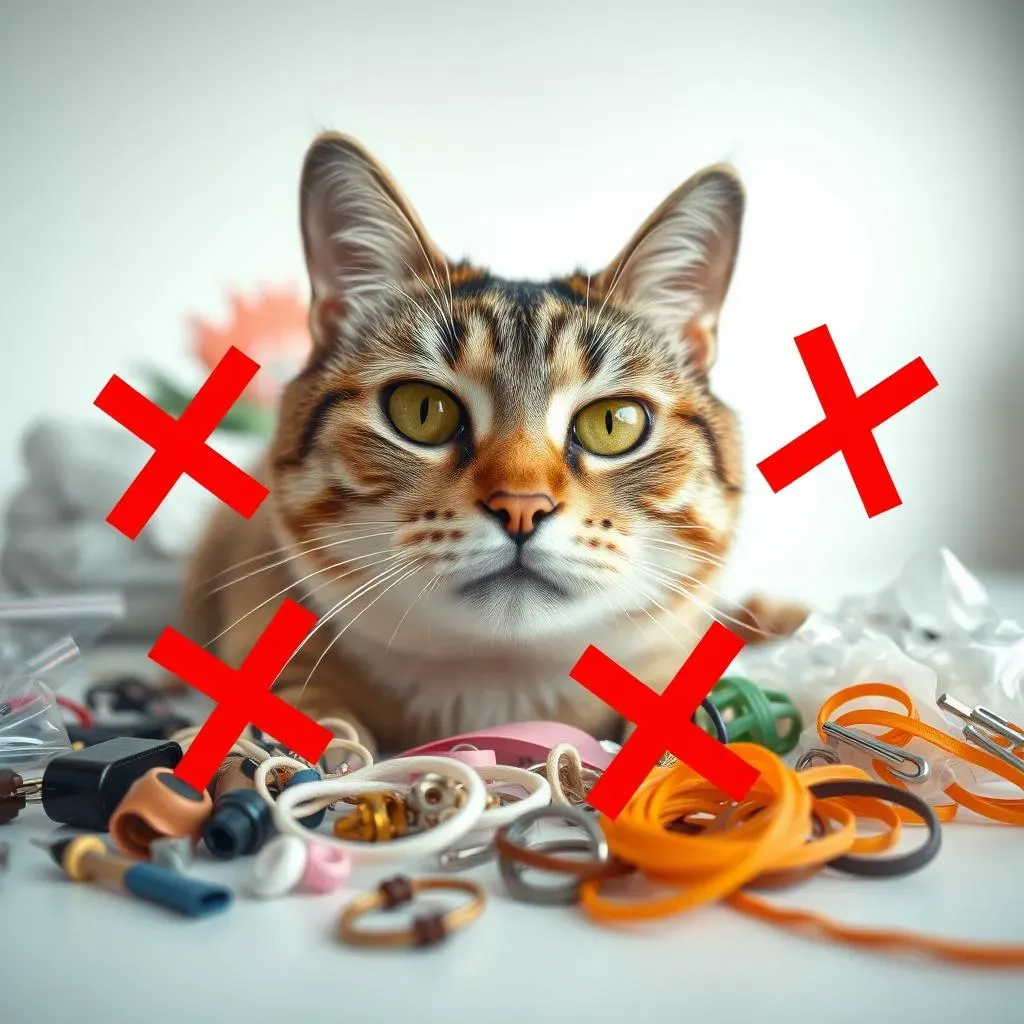
Safety First: What to Avoid When Making Cat Toys
Alright, so we're making all these awesome toys, but hold up – safety first, people! We need to be super careful about what we're putting in these toys. Think about it: cats are curious creatures, and they love to chew, bat, and sometimes swallow things they probably shouldn't. That's why it's crucial to avoid anything that could be a choking hazard, like small parts that can come off easily. Loose strings or ribbons are a big no-no; they can get tangled around a cat's neck or, even worse, get swallowed and cause serious intestinal problems. Rubber bands are another danger, and you should never use them, as they can also be a choking hazard. The goal here is to make toys that are fun and safe, not something that could end up with a trip to the vet.
Also, let's talk about materials. You might think those shiny plastic bags are fun for cats to play with, but they're actually quite dangerous. Cats can get their heads stuck in them, or they might try to eat them. Same goes for anything with small plastic pieces or anything that could be easily torn apart. You know how cats love to get into things, so, we need to be extra vigilant. Think sturdy, think safe, and think about how a cat might interact with the toy. If you have any doubt about the safety of a material, just skip it, it's not worth the risk. We want these toys to be a positive experience for the cats, not a potential hazard.
Avoid These | Why? |
|---|---|
Small parts | Choking hazard |
Loose strings/ribbons | Entanglement/ingestion |
Rubber bands | Choking hazard |
Plastic bags | Suffocation/ingestion |
Anything easily torn | Ingestion of small pieces |
Keeping Toys Clean and Safe for Shelter Cats
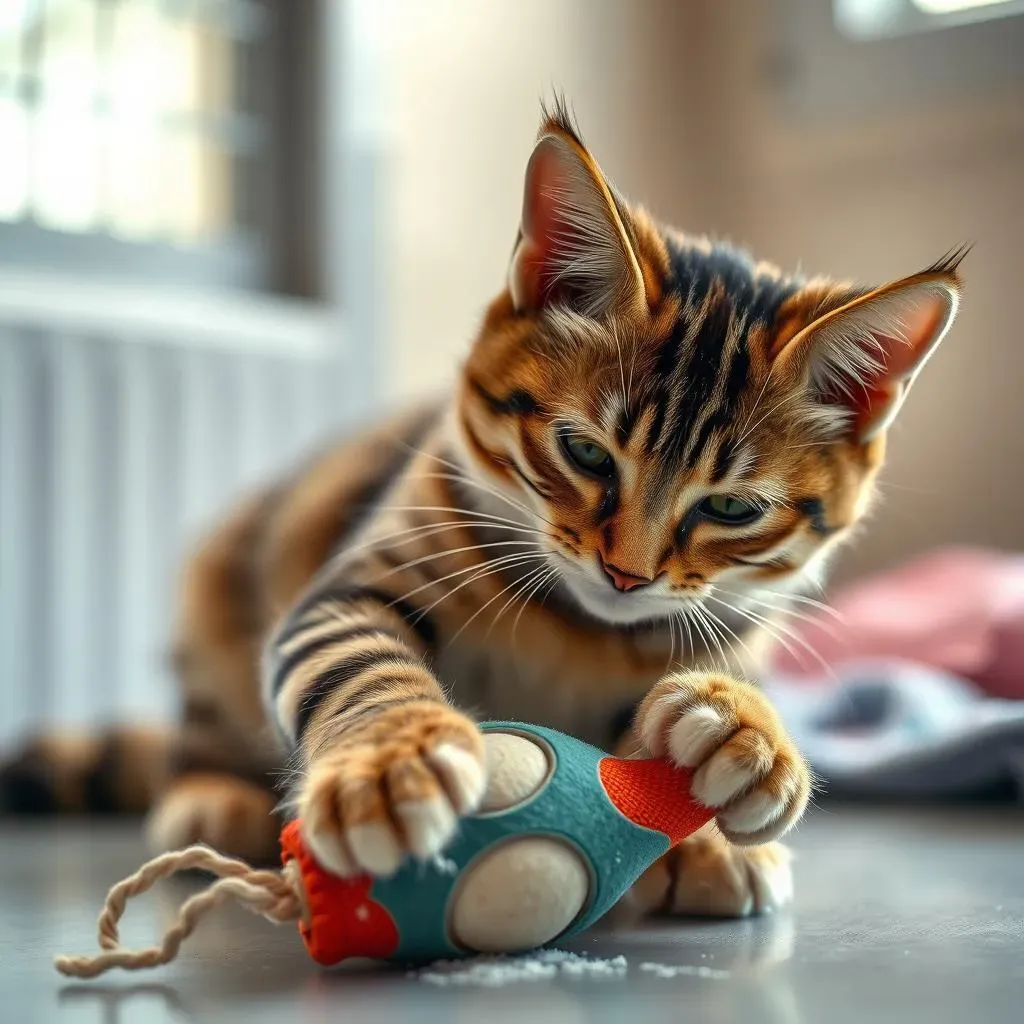
Keeping Toys Clean and Safe for Shelter Cats
Regular Cleaning: The Key to Hygiene
Okay, so we've made these fantastic toys, but they're not going to stay clean on their own, are they? Especially in a shelter environment, where toys are shared by many cats, regular cleaning is super important. Think about it – these toys are getting slobbered on, dragged around, and sometimes even used as scratching posts. All that fun can lead to a buildup of dirt, bacteria, and even germs. We need to keep these toys as clean as possible to prevent the spread of illness and keep the cats healthy. The good news is that cleaning most of these toys is pretty simple. For fabric toys, like our t-shirt strips, you can usually toss them in the washing machine on a gentle cycle. For hard toys, like the toilet paper roll dispensers, a quick wipe down with a pet-safe disinfectant or soapy water will do the trick. It's all about making sure they're safe for the next cat to play with.
I found that creating a cleaning schedule really helps. It doesn't have to be super complicated, but setting aside a few minutes each day to give the toys a quick wash or wipe-down can make a huge difference. It's like doing the dishes – it's not the most glamorous task, but it's essential for a healthy and happy environment. And remember, when you're cleaning, make sure you're using pet-safe products. Harsh chemicals can be harmful to cats, so always opt for something gentle and non-toxic. A little bit of effort in cleaning will ensure that the toys are always ready for the next playtime session.
Toy Inspection: Checking for Wear and Tear
Besides cleaning, we also need to be on the lookout for any wear and tear. You know how cats can be, they can play pretty rough sometimes! Over time, toys can get damaged, and that can create new safety hazards. For example, a small tear in a fabric toy can turn into a big hole, and that could expose the stuffing inside, which is never a good thing. Always check the toys regularly for any loose parts, tears, or damage. If you see that a toy is starting to fall apart, it's best to toss it out and make a new one. It's better to be safe than sorry. It’s all about being proactive and making sure the toys are always in good condition, that way we can keep the cats safe and happy.
I’ve seen firsthand how quickly a toy can go from fun to dangerous. One minute it's all good, and the next, it's got a loose string that could cause trouble. That’s why it’s so important to do regular toy check-ups. It might seem like a small thing, but it can make a huge difference in keeping the cats safe. Think of it like a car inspection – you wouldn't drive a car with broken parts, right? Same thing with cat toys. Regular inspections, combined with regular cleaning, will ensure that the toys are always ready for some safe, healthy fun.
Cleaning Step | How to Do It |
|---|---|
Fabric Toys | Machine wash on gentle cycle |
Hard Toys | Wipe down with pet-safe disinfectant |
Inspection | Check for tears, loose parts, and damage regularly |
Beyond Toys: Creating a Happy Environment for Shelter Cats
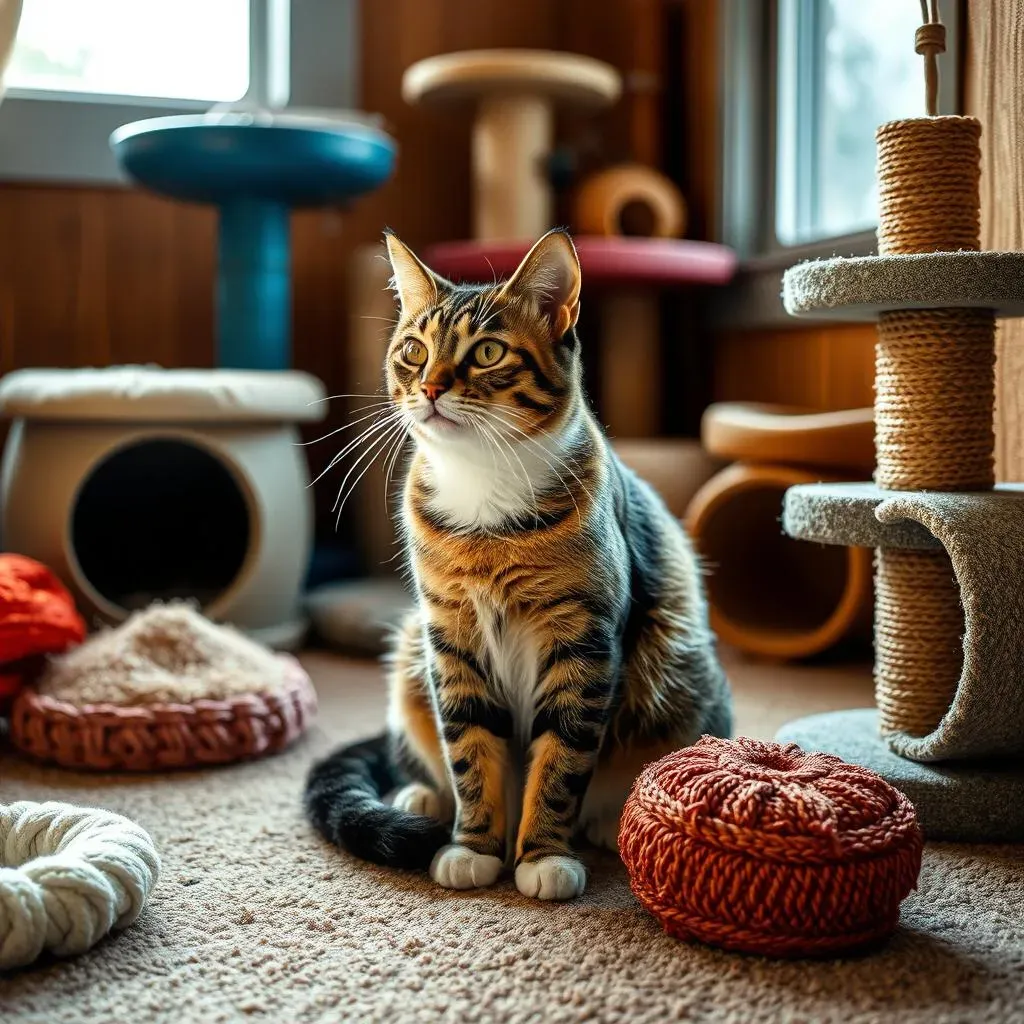
Beyond Toys: Creating a Happy Environment for Shelter Cats
Enrichment Spaces: More Than Just a Cage
Okay, so we've got the toys covered, but a truly happy shelter cat needs more than just playthings. Think about it – they spend a lot of time in their cages, and those spaces should be as enriching as possible. This means creating areas where they can climb, hide, and explore. Simple things like adding a cat tree or shelves can make a huge difference. It gives them a place to perch, survey their surroundings, and have a little bit of privacy. Hiding spots are also crucial; cats feel much safer when they have a place to retreat to. You can use cardboard boxes, tunnels, or even just a blanket draped over a corner to create these little sanctuaries. It's all about giving them options and making their space feel less like a cage and more like a home.
I remember visiting a shelter once that had these amazing cat condos, with different levels and little nooks for the cats to explore. It was incredible to see how much happier and more relaxed the cats were in those spaces. It really showed me that a little bit of effort in creating an enriching environment can go a long way in improving their overall well-being. It's not just about having a place to sleep; it's about having a place where they feel safe, stimulated, and comfortable. These enrichment spaces are like little playgrounds for their minds and bodies.
Sensory Stimulation: Engaging All the Senses
Beyond visual and physical stimulation, we also need to think about engaging their other senses. Cats are naturally curious creatures, and they love to explore with their noses and ears. Think about adding things like catnip toys or scratching posts with different textures. These can provide olfactory and tactile stimulation, which can be incredibly enriching for them. You can also try playing soft music or nature sounds to create a more calming and stimulating auditory environment. Just make sure that the music isn't too loud or jarring, as that can actually be stressful for cats. It's all about finding that balance and creating an environment that appeals to all their senses.
Enrichment Type | Examples |
|---|---|
Physical | Cat trees, shelves, tunnels, cardboard boxes |
Olfactory | Catnip toys, scented scratchers |
Auditory | Soft music, nature sounds |
Visual | Bird feeders near windows, interactive toys |
Human Interaction: The Power of Connection
Last but definitely not least, let's talk about the power of human interaction. While toys and enrichment spaces are great, nothing beats the connection between a human and a cat. Spending even a few minutes each day petting, talking to, or playing with a shelter cat can make a huge difference in their mood and overall well-being. It's a chance for them to feel loved and cared for, which is so important, especially when they're in a shelter environment. These interactions also help them become more socialized and adoptable, as they learn to trust and enjoy human companionship. It's not just about the physical interaction; it's also about the emotional connection. When you engage with a cat, you're giving them a sense of hope and showing them that they're not forgotten.
I always try to spend some time with the cats whenever I visit a shelter, even if it's just a quick pat on the head or a few minutes of play. It's amazing how much of a difference it can make, not just for the cats, but for me too. It's a reminder that even the smallest act of kindness can have a big impact. So, while we're creating these amazing toys and enriching their environment, let's not forget the importance of that human-animal bond. It's the final piece of the puzzle in creating a truly happy and healthy environment for shelter cats.
Wrapping Up: Making a Difference, One Toy at a Time
Creating diy cat toys for shelters isn't just about crafting; it's about giving back. It's about providing comfort, engagement, and a little bit of joy to cats who are waiting for their forever homes. By understanding what makes a safe and appealing toy, you're not just filling a need, but also showing these animals that they're valued and cared for. So, keep those scissors and fabric scraps handy, and let's continue to make a positive impact on the lives of shelter cats, one playful creation at a time.